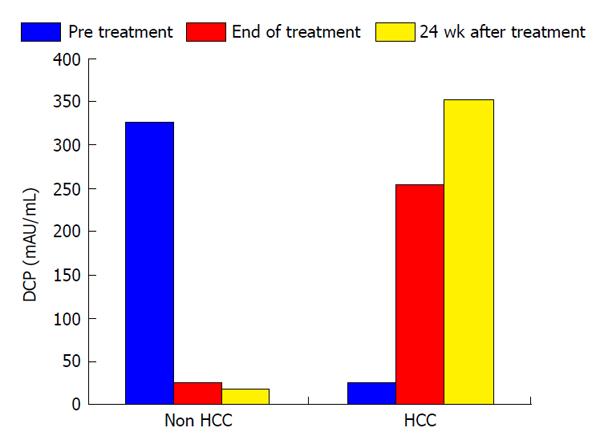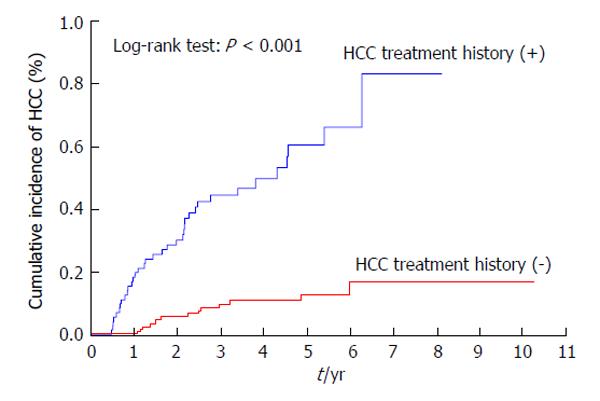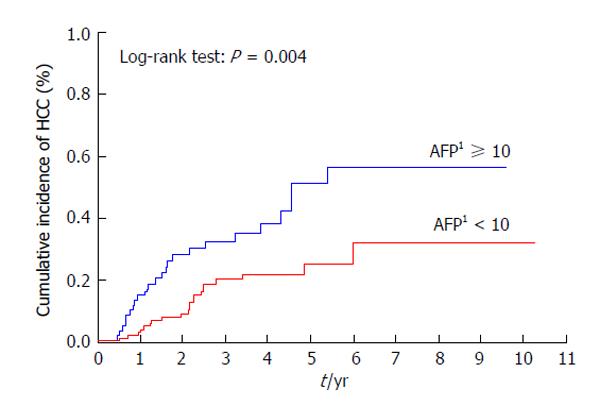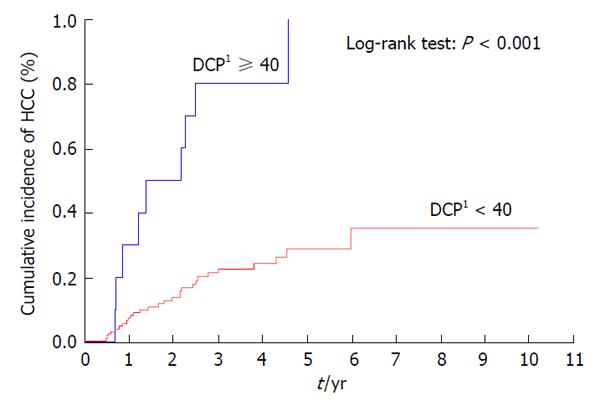Copyright
©The Author(s) 2015.
World J Hepatol. Nov 28, 2015; 7(27): 2757-2764
Published online Nov 28, 2015. doi: 10.4254/wjh.v7.i27.2757
Published online Nov 28, 2015. doi: 10.4254/wjh.v7.i27.2757
Figure 1 A change of the alpha-fetoprotein levels after interferon-based treatment.
AFP: Alpha-fetoprotein; HCC: Hepatocellular carcinoma.
Figure 2 A change of the des-gamma-carboxy prothrombin levels after interferon-based treatment.
DCP: Des-gamma-carboxy prothrombin; HCC: Hepatocellular carcinoma.
Figure 3 Cumulative incidence of hepatocellular carcinoma according to the history of treatment for hepatocellular carcinoma.
HCC: Hepatocellular carcinoma.
Figure 4 Cumulative incidence of hepatocellular carcinoma according to alpha-fetoprotein levels.
1The value at 24 wk after the completion of interferon-based therapy (ng/mL). AFP: Alpha-fetoprotein; HCC: Hepatocellular carcinoma.
Figure 5 Cumulative incidence of hepatocellular carcinoma according to des- gamma-carboxy prothrombin levels at 24 wk after the completion of interferon-based therapy.
1The value at 24 wk after the completion of interferon-based therapy (mAU/mL). DCP: Des-gamma-carboxy prothrombin; HCC: Hepatocellular carcinoma.
- Citation: Shakado S, Sakisaka S, Chayama K, Okanoue T, Toyoda J, Izumi N, Matsumoto A, Takehara T, Ido A, Hiasa Y, Yoshioka K, Nomura H, Ueno Y, Seike M, Kumada H. Alpha-fetoprotein and des-gamma-carboxy-prothrombin at twenty-four weeks after interferon-based therapy predict hepatocellular carcinoma development. World J Hepatol 2015; 7(27): 2757-2764
- URL: https://www.wjgnet.com/1948-5182/full/v7/i27/2757.htm
- DOI: https://dx.doi.org/10.4254/wjh.v7.i27.2757













